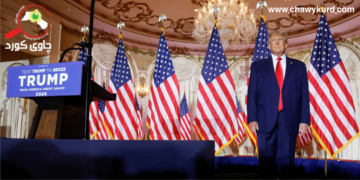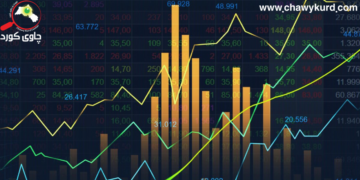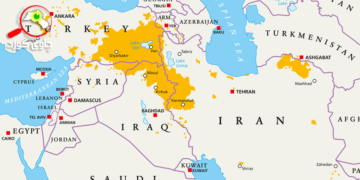May 2025 marks a decade since Beijing launched its ambitious “Made in China 2025” strategy, a plan designed to transform the nation from a manufacturing behemoth into a global industrial powerhouse. This milestone coincides with a year that has seen China achieve stunning success in artificial intelligence, exemplified by the emergence of Deep Seek. Despite a global landscape fraught with instability, trade wars, and retaliatory tariffs, China has navigated the last ten years with remarkable economic and technological progress.
Initially, China established itself as a burgeoning industrial force around 1980, leveraging its inexpensive labor to attract multinational corporations like Nike. This model, while providing jobs and wealth, led to significant industrial pollution and reliance on sometimes outdated technology. To counter these challenges, the Chinese government implemented a series of strategic “Five-Year Plans” and established special development zones. This approach concentrated heavy industries in northern provinces while transforming cities like Beijing, Shanghai, and Shenzhen into world-class innovation hubs.
As part of its transition to an “Economy 4.0,” China has leaned on its tech giants—Baidu, Alibaba, Tencent, ByteDance, BYD, DJI, and Huawei—and now, Deep Seek. These companies utilize big data and AI to build a more self-reliant, diversified, and advanced economy. The scale of this tech-driven transformation is comparable only to that of the United States.
A core objective of “Made in China 2025” was to reduce reliance on foreign technology, a goal made more urgent by geopolitical tensions.[1][2] This has been particularly crucial in sensitive sectors like semiconductors, advanced machinery, and artificial intelligence. The plan, however, has been discreetly pursued, likened by French newspaper Le Monde to a ship turning off its transponder in sensitive waters. The strategy targeted key sectors from biotechnology and new materials to semiconductors and electric vehicles.
This focus has yielded significant results. China’s evolution from a low-cost manufacturing center to an innovation hub is evident in its commitment to research and development and the protection of intellectual property. The “Made in China 2025” plan set a target for R&D spending to exceed 1.68% of revenue in key industries and to increase invention patent applications by 50% from 2015 levels. By 2017, China had already surpassed the U.S. in the annual number of patent applications, becoming a global leader in IP creation. It now also leads the world in R&D and patent filings for artificial intelligence, making the emergence of Deep Seek in 2025 an anticipated development.
According to China’s National Bureau of Statistics, total R&D expenditure surpassed 3.6 trillion yuan in 2024, an 8.3% increase from the previous year, accounting for 3.69% of the country’s GDP. Since 2022, China has accounted for about 25% of global R&D spending, second only to the United States. This investment has propelled China to become the world’s largest producer of electric vehicles, with companies like BYD gaining rapid global recognition. In aviation, the emergence of COMAC, a company capable of producing large passenger aircraft for international travel, now challenges the long-standing dominance of Airbus and Boeing.
China’s innovations are also aligning with global priorities. Its burgeoning fleet of electric vehicles supports the European Union’s goals for decarbonizing the auto sector. Following the EU’s 2023 legislation to tighten CO2 emission standards, China adopted similar policies in 2024.
Over the last decade, China has successfully transitioned from a labor-driven to an innovation-driven economy, increasing its influence on global technology standards and supply chains. However, it faces domestic challenges in balancing economic growth with environmental and social sustainability, as well as managing industrial overcapacity. Globally, it contends with intensified competition from the U.S. and other advanced economies in high-tech sectors. This has led to trade disputes, including tariffs imposed by the EU on Chinese EVs in late 2024 and U.S. export controls on advanced semiconductor equipment since 2022, aimed at slowing China’s progress.
Despite these pressures, China has become a global leader in industries such as electric vehicles, consumer drones, e-commerce, and artificial intelligence. Looking ahead, cooperation will be key in managing relations with China. There is a notable convergence in global policy goals, particularly in green policies and AI investment. For instance, former U.S. President Donald Trump, while launching a massive AI investment plan, acknowledged that Deep Seek AI should serve as a “wake-up call” for American industry to focus on competition, viewing the Chinese technology as a “very positive development” for AI overall.
While geopolitical tensions with the U.S. and EU persist, China is actively forging new partnerships, particularly through its leadership in the BRICS group and the Belt and Road Initiative.[8] President Xi Jinping has signaled that China will continue to adapt its supply chains in response to tariffs. This includes major investments in other developing nations, such as a new electric battery factory in Morocco, demonstrating a commitment to mutually beneficial growth.
For the EU and U.S., finding frameworks for cooperation remains advantageous. Reviving the Comprehensive Agreement on Investment could resolve disputes and provide Chinese businesses with greater market access in Europe, while China could more effectively address EU concerns about intellectual property rights. Ultimately, navigating the future with a transformed China will require a balanced approach of competition and collaboration on shared global challenges.




























































